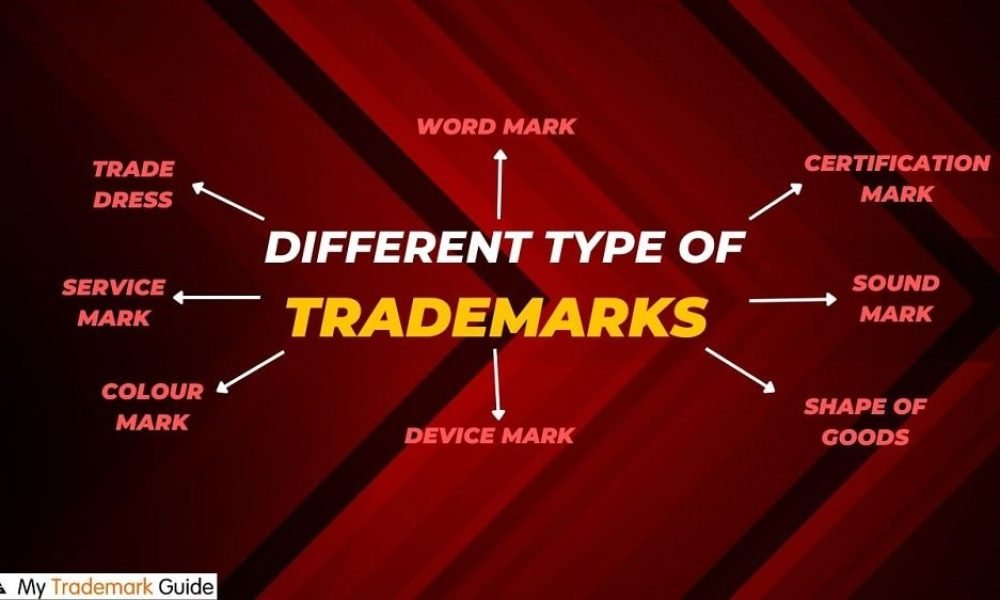Different Types Of Trademark

What Is A Trademark?
A trademark is a unique symbol, word, phrase, design or combination of these that identifies and distinguishes the goods or services of one business from those of others. Trademarks are vital for businesses because they represent brand identity and build customer trust. Over time, trademarks become synonymous with quality, reliability and consumer expectations. For example, when you see the iconic swoosh logo of Nike, it instantly brings to mind sportswear, high performance and quality.
In legal terms, a trademark grants the owner exclusive rights to use the mark in connection with the goods or services it represents. This means that no other company can legally use the same or a confusingly similar mark in the same industry.
Different Types Of Trademarks
Trademarks come in various forms, depending on how they are used and the type of protection they seek. Below are some of the main kinds of trademark:
- Product Trademark
A product trademark is the most common form of a trademark and refers to a symbol, word or phrase that is used in relation to physical goods. This type of trademark identifies the product and distinguishes it from similar products in the marketplace.
For example, the “Coca-Cola” brand name on a bottle of soda is a product trademark, signifying the drink’s source. It helps consumers recognize that the product comes from a specific company known for its quality and flavour.
- Service Mark
While a product trademark relates to physical goods, a service mark is a trademark type used to identify and distinguish services rather than products. It represents businesses in various industries such as hospitality, insurance, banking and entertainment.
For instance, the McDonald’s golden arches not only represent their food products but also the fast-food services they provide. Similarly, the FedEx logo symbolizes reliable courier services. Service marks can also include slogans or jingles that promote a company’s services.
- Collective Mark
A collective mark is a trademark type used by members of an association, cooperative or collective group to identify their goods or services and to indicate a certain standard of quality. It is owned by the association and used by its members to distinguish their goods or services from those outside the group.
For example, the “CPA” (Certified Public Accountant) designation is a collective mark used by professionals who meet the specific qualifications set by the governing body. Another example is the “CA” symbol, which signifies members of the Institute of Chartered Accountants.
- Certification Mark
A certification mark indicates that the products or services meet specific standards set by an organization. The owner of the certification mark does not manufacture the goods or provide the services, rather they certify that they meet certain quality criteria.
For example, the “Woolmark” certification on clothing verifies that the material is 100% pure wool. Similarly, “ISO 9001” certification is another example which shows compliance with international quality management standards.
- Trade Dress
Trade dress refers to the visual appearance or packaging of a product that signifies its source to consumers. This can include the design, colour, shape or even the layout of a product or its packaging. Trade dress protection is typically used to safeguard the overall look and feel of a product or its environment.
For example, the distinctive shape of a Coca-Cola bottle is protected under trade dress. This type of trademark goes beyond words or logos and ensures that the visual aesthetic of the brand is also protected from imitation.
- Word Mark
A word mark is one of the simplest forms of kind of trademarks and consists of the text that makes up the brand name or slogan. It protects the written name of a business or product rather than its design or logo.
For example, the word “Apple” in relation to computers and electronic devices is a well-known word mark. A word mark can also protect phrases like Nike’s slogan, “Just Do It,” which is synonymous with the brand’s identity.
- Device Mark/Logo Mark
A logo mark refers to the visual design, symbol or graphic that represents a brand. It is different from a word mark because it focuses on the graphic rather than the text. Many companies choose to register both their word mark and logo mark to ensure full protection of their brand identity.
For instance, the Nike swoosh is a famous logo mark, representing athletic performance and style. Similarly, the Starbucks mermaid logo is widely recognized even without the accompanying text.
- Sound Mark
A sound mark is a distinctive sound that identifies the source of a product or service. Businesses use sound marks to create an auditory association with their brand.
For example, the famous chime of Intel, known as the “Intel Inside” sound, is a sound mark that represents their computer processors. Similarly, MGM’s roaring lion sound at the start of movies is a recognizable sound mark in the film industry.
- Shape of Goods Mark
A shape mark refers to the three-dimensional shape of a product or its packaging. Like trade dress, it is used to protect the distinctive appearance of a product’s physical shape, making it unique in the marketplace.
For example, the shape of the Toblerone chocolate bar, with its triangular prisms, is protected as a shape mark. Similarly, the shape of the original Coca-Cola bottle is also a well-known shape mark.
- Colour Mark
A colour mark refers to the use of a specific colour or combination of colours to represent a brand. While colour alone cannot be registered as a trademark, if a brand uses a distinctive colour consistently over time, it can apply for protection.
For instance, Tiffany & Co.’s iconic robin’s-egg blue colour is a registered trademark. Similarly, the specific shade of purple used by Cadbury for its chocolate wrappers is protected as a colour mark.
How To Choose The Relevant Trademark Type For Filing
In India, the Trade Marks Act, 1999 governs the process of trademark registration, providing various types of trademarks that businesses and individuals can register to protect their intellectual property. The trademarks available for filing in India cater to different aspects of brand identity, ensuring that businesses can safeguard both their visual and non-visual brand elements. The types of trademarks eligible for registration in India are: Word marks, Device Marks, Colour Marks, Shape of Goods Marks, Sound Marks and Three Dimension Marks.
Conclusion
Trademarks are essential tools for businesses, allowing them to create a distinctive identity in the marketplace. They protect brands from being misrepresented or copied by competitors, ensuring that consumers can trust the source of the goods or services they purchase. From traditional word marks and logos to more complex forms like sound, shape and colour marks, trademarks come in many varieties to suit different business needs.
For businesses looking to grow and build a lasting reputation, registering a trademark is a critical step toward safeguarding their brand. Whether you’re a startup or an established company, protecting your intellectual property through trademarks is an investment in your future success.
Frequently Asked Questions (FAQs)
A trademark is used to protect products or goods, while a service mark is used to identify and protect services provided by a business. For example, a product trademark would protect a brand name on clothing, whereas a service mark would protect a business offering banking or consulting services.
To select the right trademark type, consider what aspects of your brand you want to protect. If it’s your business name or a product name, go for a word mark. If you want to protect your logo, choose a device mark. For unique shapes or packaging, consider a shape or 3D mark, and if your brand uses specific colours or sounds, you can file for colour or sound marks.
No, a single trademark application can only cover one type of mark at a time. If you wish to protect both the word (text) and logo (device), you’ll need to file separate applications for the word mark and device mark.
Registering a trademark gives the owner exclusive rights to use the mark for their goods or services, preventing others from using the same or a similar mark. It builds brand credibility, allows legal action in case of infringement, and adds value to the business by securing brand identity.
A colour mark is the protection of a specific colour or combination of colours that have become synonymous with a brand. Registering a colour mark can be challenging as you need to prove that the colour has acquired distinctiveness and is strongly associated with your brand over time, which typically requires evidence like market surveys and extensive usage.
To register a sound mark in India, the sound must be distinctive and graphically representable (such as in musical notation). You must also submit a recording of the sound. Famous examples include jingles or sound logos that instantly identify a brand, such as the Intel chime or the Nokia ringtone.
A shape mark focuses on protecting the unique shape of a product (e.g., the shape of a bottle), whereas a three-dimensional mark protects the overall 3D design or configuration of a product or its packaging. Both must be distinctive and recognized by consumers as indicative of the product’s source.
In India, once registered, a trademark is valid for 10 years from the date of filing. It can be renewed indefinitely in 10-year increments, as long as the renewal fees are paid on time.
While it’s possible to file for any type of trademark before extensive use, proving distinctiveness for non-traditional marks like sound or colour is more difficult. Typically, you will need to provide evidence showing that consumers already associate the sound or colour with your brand, which is easier after prolonged use in the market.
Yes, you can file for a shape mark or three-dimensional mark to protect the unique design of your product’s packaging, provided the shape is distinctive and has gained recognition as being associated with your brand. Examples include distinctive perfume bottles or product containers with a unique shape.




